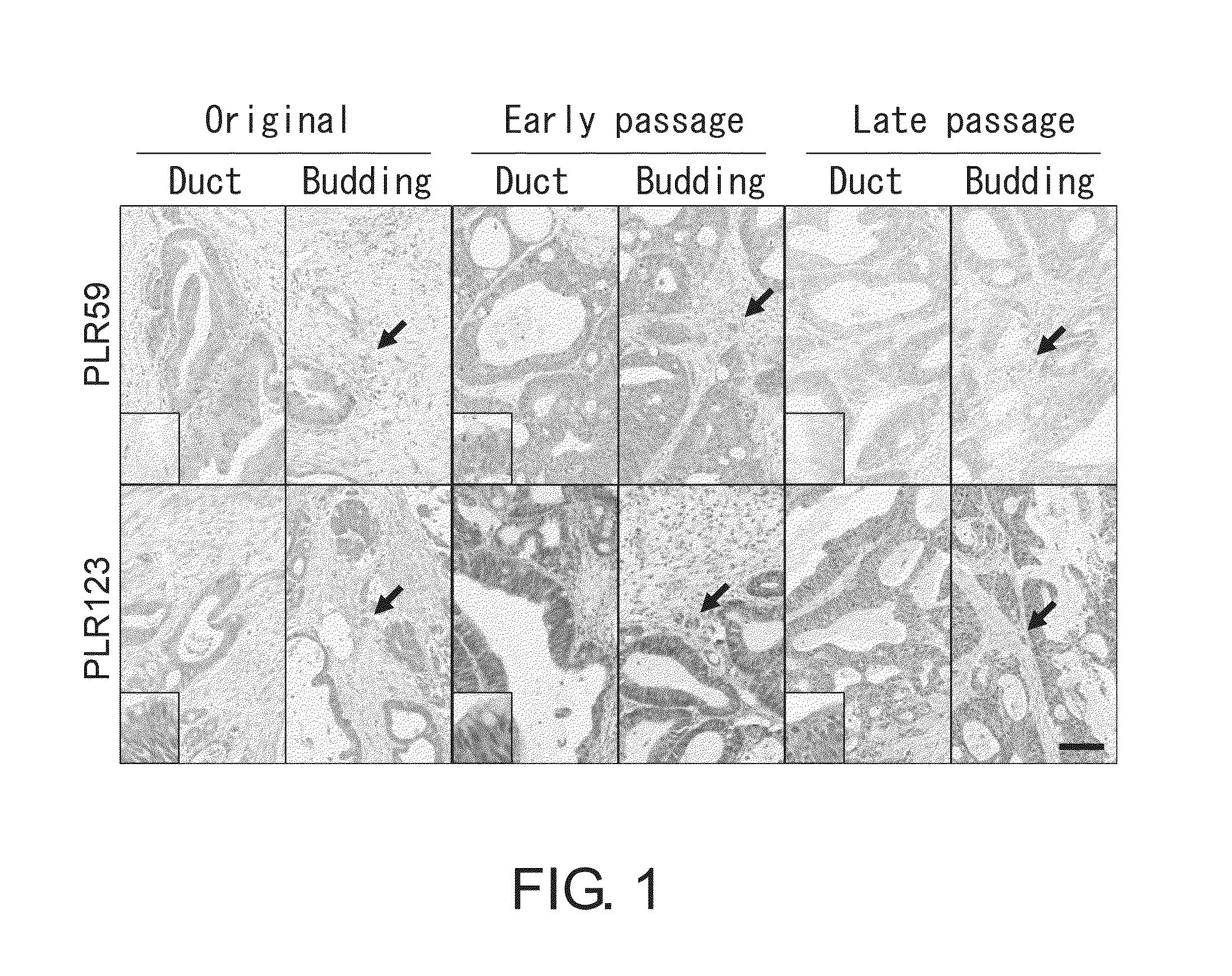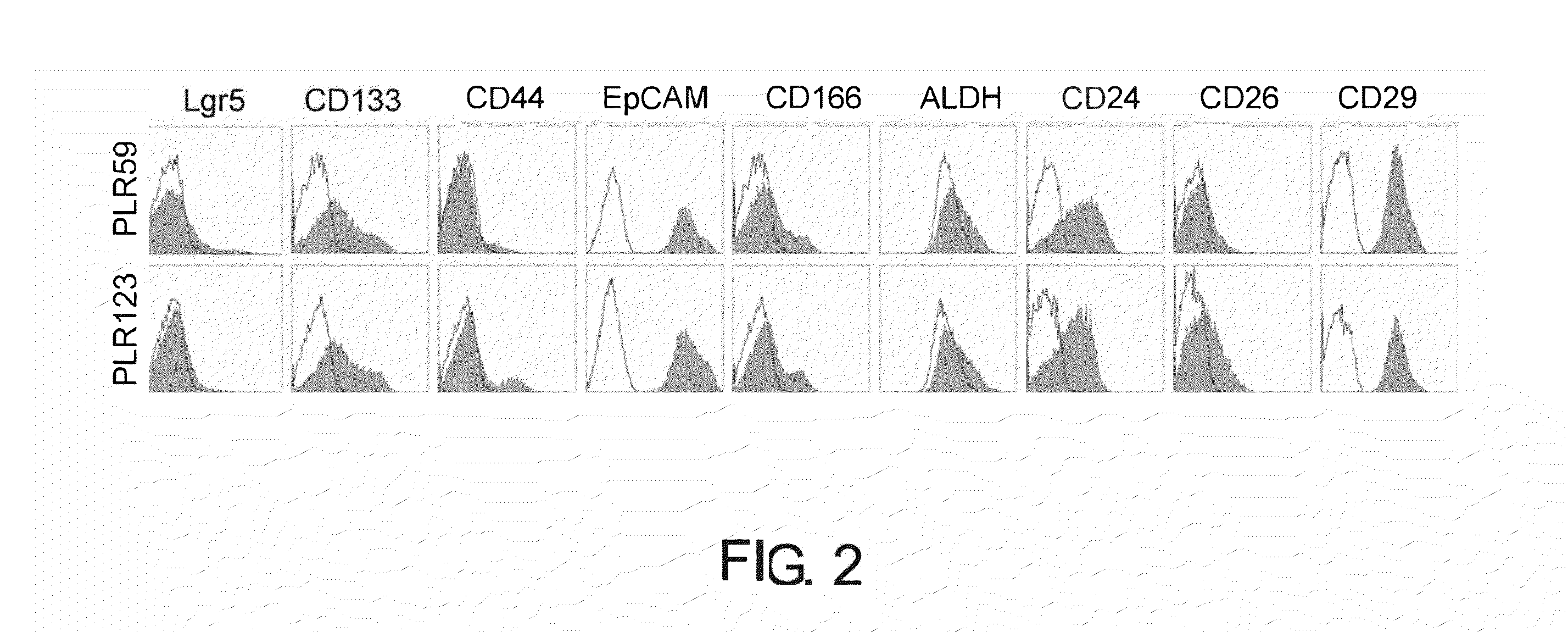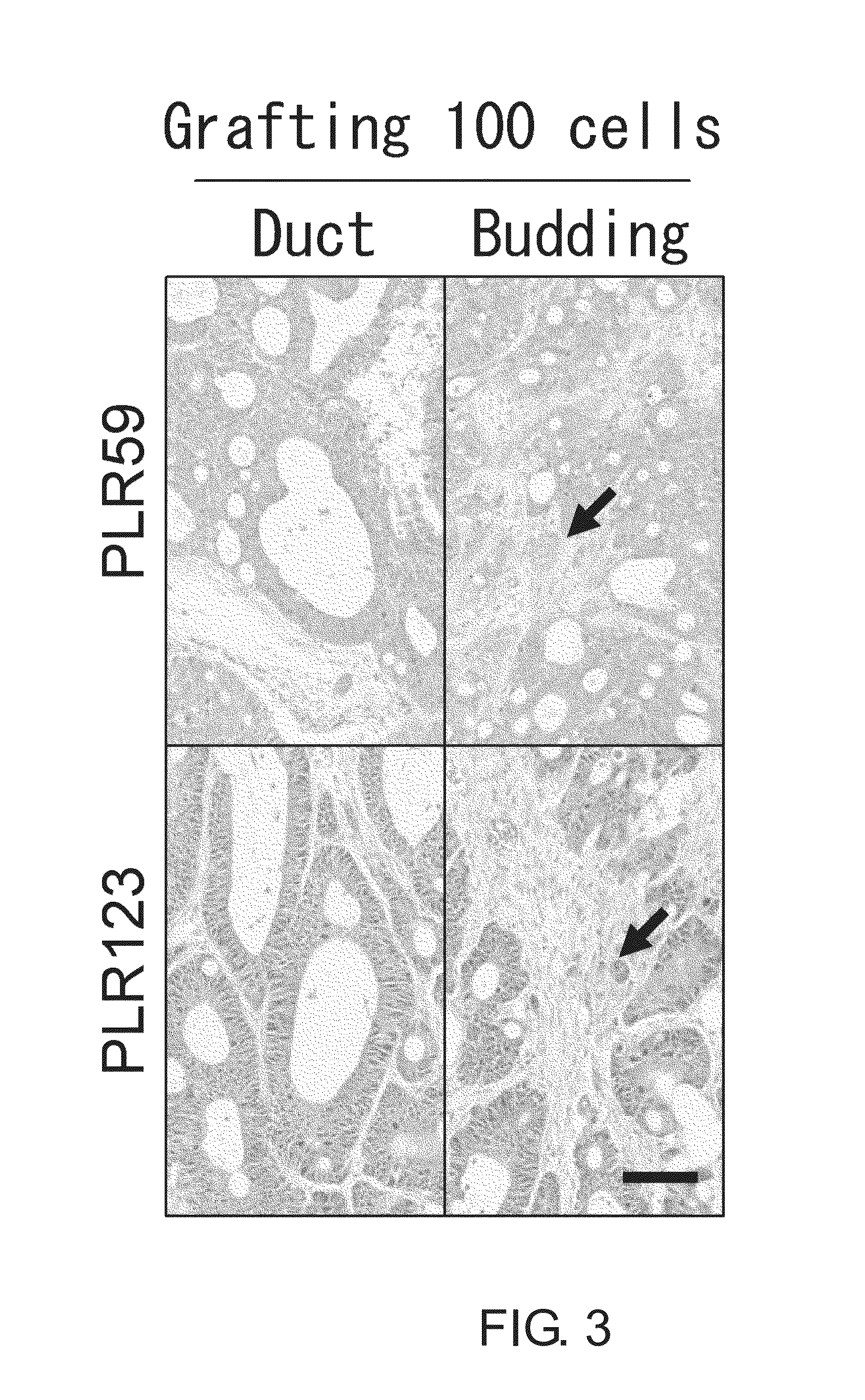Cancer stem cell-specific molecule
a stem cell and specific molecule technology, applied in the field of cancer stem cell specific molecules, can solve the problems of complex biochemical analysis, limited number and purity of cells obtained by this method, and the phenotypic heterogeneity and/or instability of cscs in the isolation of cscs, etc., and achieves high purity, high purity, and high proliferative
- Summary
- Abstract
- Description
- Claims
- Application Information
AI Technical Summary
Benefits of technology
Problems solved by technology
Method used
Image
Examples
example 1
Establishment of Colorectal Cancer Xenografts
[0344]As described in a previous report (Fujii E. et al., (2008) Establishment and characterization of in vivo human tumor models in the NOD / SCID / gamma(c)(null) mouse. Pathol Int 58: 559-567), the present inventors established 11 types of human colorectal cancer xenografts using NOD / Shi-scid, IL-2Rγnull (NOG) mice (Table 1; the number of human colorectal cancer cell lines established with immunodeficient NOG mice).
TABLE 1AdenocarcinomaG1G2G3TotalNumber of cases446353Established010111Impracticable*0606EBV lymphoma216119Aggravated animal condition†112114No viable cancer1203
[0345]In the above Table 1, asterisk indicates cases established but unsuitable for experiment, and dagger indicates cases with infection and such.
[0346]As shown in Table 1, 17 types of colorectal cancer xenografts were established from samples of 53 human colorectal cancer patients. Except for the 17 types of xenografts, associated EBV-infected lymphoma cells occurred in...
example 2
Isolation of Large Intestine CSCs
[0349]In order to isolate large intestine CSCs, the present inventors used two types of MDCC xenografts, i.e., PLR59 and PLR123. These xenografts were chosen by the present inventors because they grew rapidly even after 10 passages in NOG mice while maintaining the capacity to reconstitute tumors with epithelial ducts and small budding clusters (FIG. 1). Thus, the present inventors predicted that stable CSCs can be obtained from the xenografts.
[0350]Flow cytometry analysis of primary cells passaged in NOG mice derived from PLR59 and PLR123 showed that signal level of CD44, ALDH, CD26, and Lgr5 were lower than that of CD133, EpCAM, CD166, CD24, and CD29. This suggests the existence of a small population of CSCs (FIG. 2). Indeed, when primary cells derived from PLR59 and PLR123 were grafted subcutaneously to NOG mice at 100 cells / injection site, tumors were formed at half of the injection sites (five of 12 injection sites; Table 3), and the histopathol...
example 3
Analysis of Lgr5 Protein Expression
[0354]In order to assess the expression of Lgr5 protein, the present inventors prepared two types of Lgr5-specific monoclonal antibodies (2L36, 2T15E-2, and 2U2E-2) respectively for immunohistochemistry and flow cytometry analysis. The antibodies produced by the present inventors were highly specific to Lgr5 without any cross-reactivity to Lgr4 or Lgr6, both of which are highly homologous to Lgr5 (FIGS. 28 and 29). Using the antibodies, the present inventors demonstrated the expression of Lgr5 in the adherent CSCs.
[0355]Lgr5-positive cells were detected in tumor tissues that were the origins of PLR59 and PLR123 as well as in xenograft cancer tissues therefrom through all passages (FIG. 39). The frequency of Lgr5-positive cells was low in the original tumor tissues (0.01% and 0.04% for PLR59 and PLR123, respectively). Regarding the xenograft cancer tissues, the frequency of Lgr5-positive cells was increased as passage number increased; however, ther...
PUM
| Property | Measurement | Unit |
|---|---|---|
| concentration | aaaaa | aaaaa |
| concentration | aaaaa | aaaaa |
| concentration | aaaaa | aaaaa |
Abstract
Description
Claims
Application Information
 Login to View More
Login to View More - R&D
- Intellectual Property
- Life Sciences
- Materials
- Tech Scout
- Unparalleled Data Quality
- Higher Quality Content
- 60% Fewer Hallucinations
Browse by: Latest US Patents, China's latest patents, Technical Efficacy Thesaurus, Application Domain, Technology Topic, Popular Technical Reports.
© 2025 PatSnap. All rights reserved.Legal|Privacy policy|Modern Slavery Act Transparency Statement|Sitemap|About US| Contact US: help@patsnap.com



